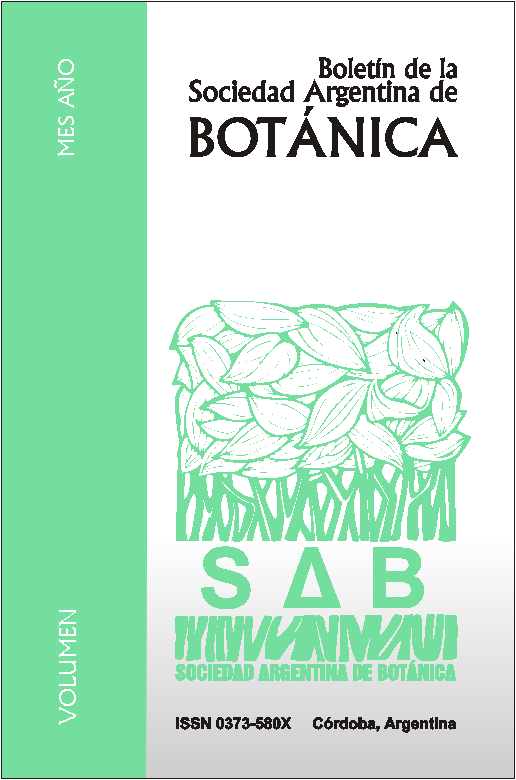Pollen analysis of immature honeys in the Western Sector of the Yungas in Jujuy (Argentina).
DOI:
https://doi.org/10.31055/1851.2372.v51.n3.15390Keywords:
Nectar, mellisopalynology, Apis mellifera, YungasAbstract
Pollen analysis of immature honeys in the Western Sector of the Yungas in Jujuy (Argentina). With the aim of knowing the nectar resources used by Apis mellifera L. in the western of the Yungas in Jujuy, 14 samples of immature honey and two of mature honey of periods 2011-2012 and 2012-2013, pertaining to a apiary of Tilquiza, were examined. That samples were processed according to conventional melissopalynologcal techniques with subsequent acetolysis. A total of 53 pollen types belonging to 31 botanical families were identified being Asteraceae and Fabaceae the most well represented. As dominant source were identified Crinodendron tucumanum in september 2011, Blepharocalyx salicifolius in november and december 2011 and type Scutia/Condalia in october 2012. As second contributions were identified Allophylus edulis, Zanthoxylum, Parapiptadenia excelsa, Baccharis, Gnaphalium, Eucalyptus and type Cissus, highlighting the influence of the native flora of the Yungas. From this study it was known to understand the dynamics of income nectar to the hive and evaluate those resources that are not present in mature honey and which are important for the development of the hive.
Downloads
Published
Issue
Section
License
Provides immediate and free OPEN ACCESS to its content under the principle of making research freely available to the public, which fosters a greater exchange of global knowledge, allowing authors to maintain their copyright without restrictions.
Material published in Bol. Soc. Argent. Bot. is distributed under a Creative Commons Attribution-NonCommercial-ShareAlike 4.0 International license.





